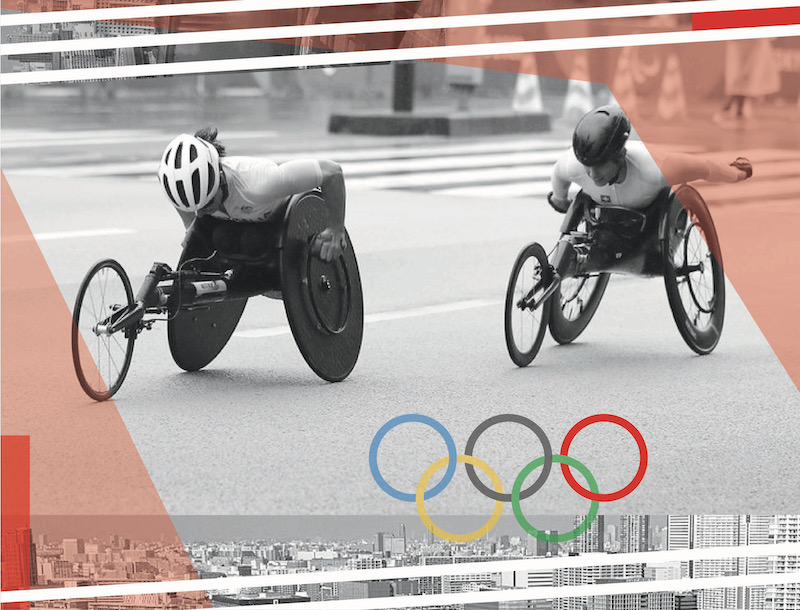
Prof Holly Thorpe
Professor of Sociology of Sport in Te Huataki Waiora School of Health, University of Waikato, Aotearoa New Zealand. Her areas of expertise include gender, action sports, youth culture and female athlete health.
Twitter: @hollythorpe_nz

Prof Belinda Wheaton
Professor of Cultural Sociology of Sport in Te Huataki Waiora School of Health, University of Waikato, New Zealand. Her research is focused on sport and social justice, sport, leisure and wellbeing, sport and the media, and qualitative research methodologies.
Twitter: @Billiewhiz

Section 5: Politics of Sport
- Despite “Gender Equal Olympics,” focus still on what women are wearing
- The sacred space of the Olympics
- At Tokyo Games, athlete activism takes front row seat despite IOC’s attempts to silence athletes
- Forced hijab and female athletes in postrevolutionary Iran
- Pay equity and the Tokyo 2020 Olympics
- We want reform
- The revolt of the Black athlete continues
- The colonization of the athletic body
- Anti-Olympics activism
- Rooting for U.S. Olympians: Patriotism or polarization?
- Black women and Tokyo 2020 games: a continued legacy of racial insensitivity and exclusion
- “A ceremony for television”: the Tokyo 2020 media ritual
- Softball’s field of Olympic dreams
- Equal remuneration for a Paralympian
- Is there space on the podium for us all?
- The Tokyo Paralympics as a platform for change? Falling well short of sport and media ‘opportunities for all’
- Tokyo 2020 Paralympics: inspirations and legacies
- What social media outrage about Sha’Carri Richardson’s suspension could mean for the future of anti-doping policies
- Now you see them, now you don’t: Absent nations at Tokyo Paralympic Games
- Will #WeThe85 finally include #WeThe15 as a legacy of Tokyo 2020?
- WeThe15 shines a spotlight on disability activism
- Activism starts with representation: IPC Section 2.2 and the Paralympics as a platform for social justice
- In search of voice: behind the remarkable lack of protest at the Tokyo Paralympics
Four new youth-focused action sports debuted at the Tokyo Olympic Games: surfing, skateboarding, sport climbing and BMX freestyle. According to the International Olympic Committee (IOC), the inclusion of these new events is part of “the most comprehensive evolution of the Olympic program in modern history”. The IOC, the Tokyo Organizing Committee and the relevant International Federations had been working on the inclusion of these sports since 2015, but for many Olympic fans the addition of action sports raises big questions: are they really Olympic sports, and do they deserve to take the place of more established events?
Seeking younger viewers
Our research has explored the processes and politics behind this decision which go back over 20 years. The inclusion of these new sports is part of the IOC’s big goal of making the Olympics more attractive to younger spectators, as well as efforts to improve gender ratios of the Games and to respond to broader social trends in the urbanization of sport.
The IOC had been responding to the aging demographics of viewers with the inclusion of a range of initiatives (i.e., Youth Olympic Games, Olympic YouTube channel, inclusion of various other action sports). But the arrival of IOC President Thomas Bach in 2013 and introduction of the Agenda 2020 policy accelerated the modernizing process, including the addition of the five new sports into the 2020 Games. Following a review to measure the overall performance of all sports, various international federations developed strategies to become more youth-friendly. The International Cycling Union approved BMX freestyle, and the International Basketball Federation added basketball 3×3 for Tokyo.
The inclusion of these new sports helped to meet key IOC criteria around youth, gender and global appeal. Furthermore, these new additions are a response to criticisms of the elitism of the Games, an attempt to bring sports ‘to the people’ in that they typically require little equipment, resources or facilities. They are activities that people – young and old – are participating in their everyday lives at recreational and competitive levels.
Action sport cultures divided
With the action sport economy plateauing, many in the industry actively supported Olympic inclusion. Some industry members played key roles in leading the processes of inclusion. But the countercultural heritage of many of these sports has led to tensions. Many participants view them nostalgically as alternative lifestyles rather than conventional sports. The associated value systems they celebrate – self-expression, creativity, fun – are often considered at odds with the disciplinary, hierarchical, nationalistic Olympic ethos. This saw the initial proposals to include surfing, skateboarding and sport climbing in Tokyo hotly contested by many within the wider action sporting cultures, worried about the loss of autonomy and control of ‘their’ sports.
While the Olympic athletes were enthusiastic ambassadors for their sports (and likely to see significant economic and cultural rewards), there are those within the action sport worlds who continue to view Olympic inclusion as just another money-making stunt — part of a longer process of ‘selling out’ with little benefit for their sports.
A changing Olympic landscape
Without spectators, the Tokyo Olympics weren’t able to realize the festival environment envisioned pre-COVID, with live music, art and a youth-friendly vibe at both the urban and beach locations. However, the new action sports certainly made their mark on the Games.
Global audiences were fascinated by the domination of young girl skateboarders in the street and park events. Journalists and audiences were wowed when both podium were dominated by teenage skateboarders, including thirteen year olds Momiji Nishiya (Japan) and Rayssa Leal (Brazil) in the street and twelve year old Kokona Hiraki (Japan), and thirteen year old Sky Brown (Great Britain) in the park. With Japan winning five of 12 skateboarding medals available (three gold), the country’s talent in this urban sport was clearly evidenced. The hegemonic positioning of the USA (or what some have referred to as the ‘Californization’ of action sports) was being effectively challenged at the games, with Japan, Australia, Brazil and China all showing a depth of talent and potential.
The BMX freestyle riders and sport climbers displayed their incredible athleticism and abilities to read, interpret and respond to the built environment in highly creative ways. Global audiences saw surfers making the most of the storm swell, with huge emotion on display for both the winners and the upsets in earlier rounds. At the medal ceremonies, International Surfing Association (ISA) President Fernando Aguerre sported his unique style, including a Hawaiian-style shirt, yellow pants, a straw hat, and wristbands. He made a striking contrast to the IOC representative in a suit and tie on the beach. In this way, Aguerre was making a not-so-subtle statement that surfers could maintain their unique culture and style within the IOC model of surfing.
While our initial media analysis during the Tokyo 2020 Olympics suggests divided opinions within the global action sport communities, the athletes were clearly committed and valued the opportunity. Mainstream audiences also appeared to have enjoyed the events, even if they didn’t always fully understand the judging systems or the unique cultural values on display. Whereas some audiences celebrated the camaraderie on display between the sport climbers (i.e., sharing tips before the climbs) and the expressions of friendship and fun at the skateboarding events, others continued to ask whether they are really Olympic worthy sports. Regardless of public opinion, these sports will be joined by breaking and kiteboarding, bringing youth culture to the Paris 2024 Olympic Games.

